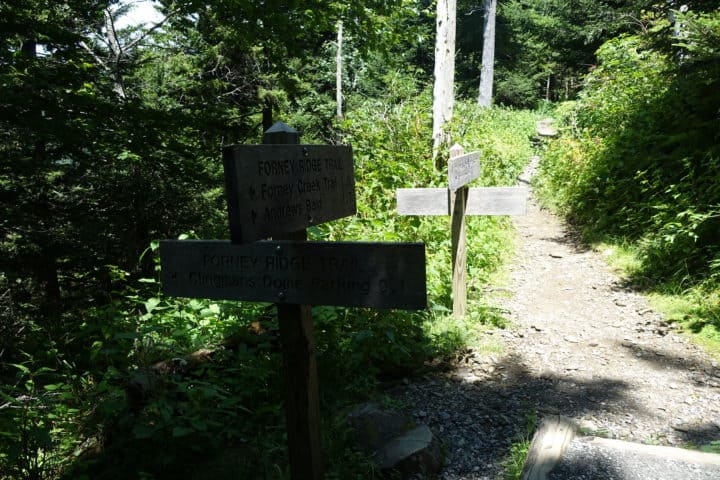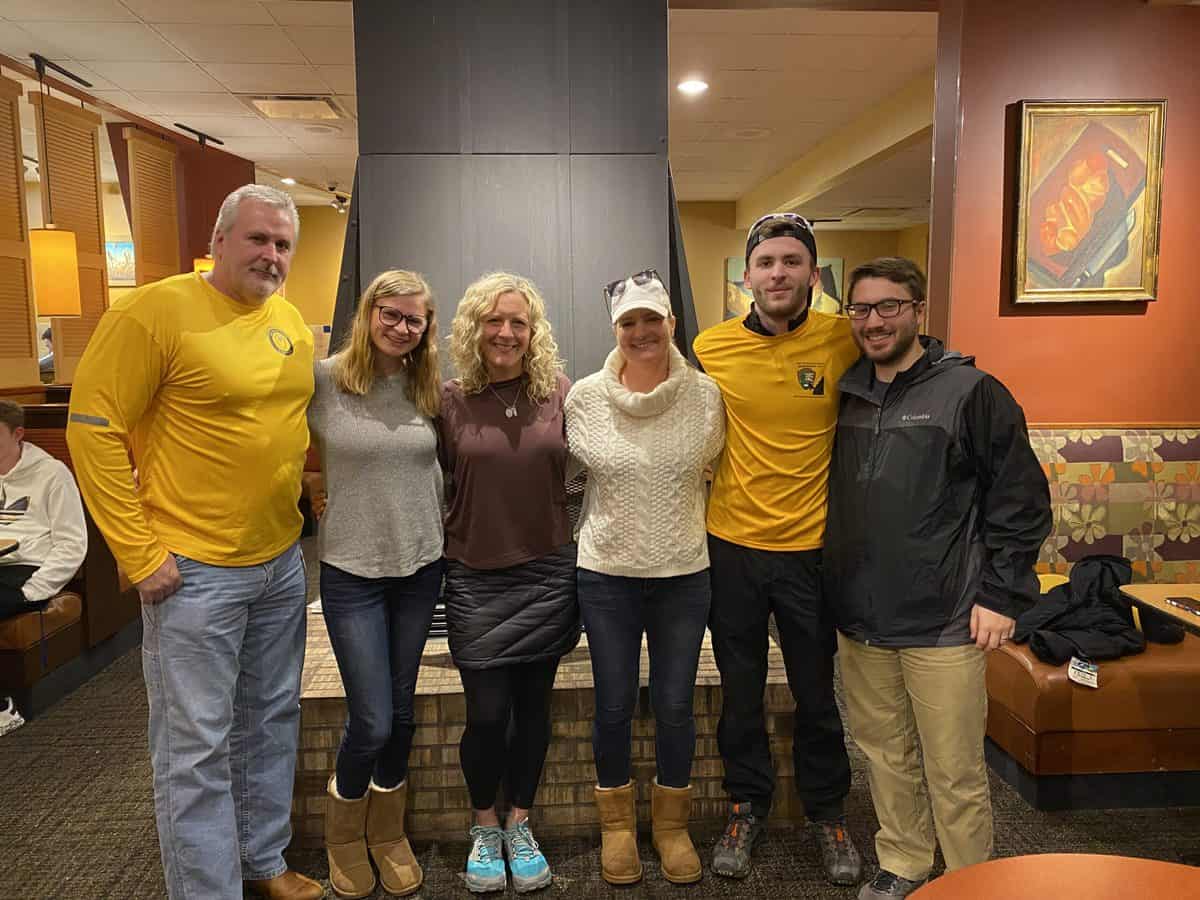I used to be one of those people too. Sure, I thought about the “what if’s” a little, but never to the degree that I imagined myself needing my wits and my gear to keep me safe from a number of things: Bad weather in all sorts of forms, injuries (beyond blisters), getting lost, animal encounters….and the list goes on. I also didn’t understand how incredibly fast certain situations can escalate to the point of truly needing these specific skills and gear for my survival.
I think a compelling way to start this conversation is by sharing a story about one of our searches. It revolves around a lost hiker named Susan Clements who we searched for in Great Smoky Mountains National Park in September 2018.
Small disclaimer before we go on: Sharing Susan’s story isn’t meant to belittle or judge her decisions. Anything but. Everything she did stemmed from ignorance, which simply means she didn’t know any better. I actually met with Susan’s family and asked for their blessing in sharing this story, to hopefully save other lives.

Susan Clements with her children.
Susan was hiking with her grown daughter on one of the most popular trails in the Park. As they were heading back to their car in the late afternoon, a little less than a mile from the trailhead, they decided to split up since Susan’s daughter wanted to visit Clingman’s Dome, the iconic tower on top of Tennessee’s highest mountain (which was a short walk from the trailhead where they started). They agreed to meet back at the car…but Susan never showed up.
A week later, searchers found Susan’s body about three quarters of a mile from the Appalachian Trail, not even close to where she and her daughter parted ways or the trailhead at Clingman’s Dome. She died of exposure, or more specifically, hypothermia.
While we’ll never know the exact path Susan took that led to her death, many of us speculate she missed seeing the turnoff to the parking lot from the trail. A half mile later, she would hit the Appalachian Trail when it was probably getting dark. Fog was rolling in as well as rain and temperatures in the 40’s. The wind was likely picking up too. Perfect conditions for hypothermia for someone unprepared.

This is the trail junction where Susan should have turned to the right to head up a short hill to the parking lot and her waiting car. With the fog rolling in, she may not have seen these signs if her head was down, focused on the trail.
Susan did have a cheap rain poncho that she purchased at a Park gift shop, but that was it. The rain was probably trickling into her poncho and soaking her cotton clothing, along with the sweat she generated as she mistakenly hiked uphill to the Appalachian Trail.
She was likely scared and getting panicky when it sunk in that she was “misplaced,” desperately searching in the dark for a way out of her nightmare. But even if she was one of the few people who can remain calm in a situation like that, her core body temperature was probably down a couple of degrees by then, and cognitive abilities begin their downward spiral even with mild hypothermia. In Susan’s altered mental state, without someone to make good decisions for her, anything was possible
Searchers were dispatched that night to search all the trails in that area, but since she was likely off a designated trail by the time they hit the ground looking for her, they didn’t find her. The next seven days were filled with hundreds of searchers doing extensive off-trail searches for Susan, the search area widening with each passing day.
Off-trail searches in areas as rugged and dense as the Smokies are incredibly challenging and time consuming. It would take six days to even start covering the area where articles of Susan’s clothing were found (she had removed them, which is something that happens during the end stages of hypothermia in a phenomenon called “paradoxical undressing”). On the seventh day of the search, her body was found, only partially clothed, lying in a creek.
It still blows my mind every time I remember that she got lost less than a mile from the trailhead, on one of the most popular trails in the Park, during a month that people often still wear shorts and tank tops while they hike.
It would be easy to just get depressed about Susan Clements and not move forward with learning from her story, but I hope you’ll agree that the best way we can honor her memory is by learning from her tragedy. My involvement with Susan’s search and her death is what prompted me to take a big leap into the world of outdoor education with my blog and outreach.
Her story punctuates the fact that…
No matter how short of a distance you’re going to hike, and how popular the trail, you simply MUST take everything you need to survive a night (or more) in the woods, should you become injured or lost.
Before I go any further, here’s a short survey (2 questions, really it’s super short!) that I put in a previous post. I encourage you to take it before you continue reading, and I promise, your identity will remain completely anonymous to me if you take it. It will either serve as an eye opener or a pat on your own back. Regardless, take a moment to look at it and I’ll wait right here while you’re gone….
Okay, I’m assuming you took the time to take the survey linked above. If you did and you answered “all of the above” or simply checked all the boxes in the second question, you get an A+ for your grade! If you missed a few, no worries, you’re here to learn so you can pat yourself on the back for that too. In other words, everybody gets a participation medal on this one! 😉
That list of gear is commonly referred to as “The 10 Essentials.” It was first published in a book called Mountaineering: The Freedom of the Hills. Its intent was to answer two basic questions that apply to anyone entering the backcountry:
- Can you respond positively to an accident or emergency?
- Can you safely spend a night (or more) outside?
It really does boil down to those two questions, and there is a specific set of gear that will achieve this goal, in most situations. So let’s get to it and find out whatcha need! I’ve provided some links to various items, based on the gear I use and recommend, but gear options with various brands and price points are endless these days!
THE 10 ESSENTIAL “SYSTEMS” FOR YOUR BACKPACK
1. NAVIGATION: MAP, COMPASS, and GPS SYSTEM
A good map and knowing how to read it is crucial when you’re in the backcountry. And no, a GPS or navigational app on your phone does not replace the need for a map, so always bring one!
Maps such as this one from National Geographic are very useful.
A compass doesn’t do you much good if you don’t know how to use it. And for the record, we’ll touch on some basic navigation skills in a future lesson, so don’t panic if you don’t know anything about them yet!
Beyond what I can teach you, there are many useful tutorials, YouTube videos, etc., online that provide extensive lessons on how to use them. Books are also a great way to learn. I have downloaded the Kindle version of this book, Wilderness Navigation: Finding Your Way Using Map, Compass, Altimeter, and GPS, onto my phone. It truly taught me as much as any course did. And I love having a resource to refer to when I’m in the backcountry, if I forget something I’ve learned. Plus, navigation is a skill best learned by “doing” and having the digital version of this book with me on hikes has provided many a refresher lesson on the trail, when I simply want to practice my skills.
There’s no need to purchase a fancy compass with a mirror. Something simple like this one will do just fine:
Aside from a map and compass, a navigational app loaded onto your phone is an excellent tool to have on a hike (but do not rely on an app exclusively since phones can break, get dropped and stop working, run out of battery, etc.).
Gaia GPS is my personal favorite for navigation and I highly recommend it. It works with both iOS and Android platforms. It offers a free version as well as a paid subscription with more bells and whistles. I have the Premium plan and love everything about it. We’ll talk about Gaia more in a future lesson, but it’s also a very useful tool to use as you plan your hike.
**As a side note, in an effort to help more folks stay safe in the backcountry, Gaia GPS is offering my readers a 20%-50% discount on the paid version of the app. You can start with the free version first, to see if you like it, but most folks quickly realize some of the most useful features aren’t accessible without paying a little for them (and it’s not expensive at all, I promise). You can access the discount through this link.
2. ILLUMINATION: HEADLAMP OR FLASHLIGHT
The reasons for taking a light source are probably pretty obvious, and some people like to bring two, to have a backup. Personally, I consider my phone’s flashlight feature a backup and only bring my headlamp with extra batteries.
All my family members carry the Black Diamond Spot Headlamp but I have the Black Diamond Storm which is a bit more powerful and is nice for night hiking (which I do a lot of with search and rescue). You can’t go wrong with either and they’re both highly rated. You can read about the differences between them via a comparison chart right here.
3. NUTRITION: EXTRA FOOD
If you’re smart, your extra food will include Peanut M&Ms. :-). Seriously though, if you’re out in the woods longer than expected, whether you’re lost or just taking longer than you expected to finish your hike, extra munchies are something you’ll be glad you have. Food high in fat, protein, and calories is the ideal combination for your extra stash. I typically carry an extra day’s worth of food with me on day hikes.
4. HYDRATION: EXTRA WATER AND WATER PURIFICATION SYSTEM
If you’ve done your research and know you’ll be in an area with abundant water sources, consider what you’ll need to get started but make sure you have a way to purify more when you need it or if you’re out longer than expected. The Sawyer Micro Filter is always in my pack and is a lightweight and incredibly inexpensive way to insure I don’t return home with any nasty “souvenirs” such as Giardia or Cryptosporidium!
5. FIRST AID KIT
If you’re just getting started with hiking, there are many pre-made kits you can purchase, like this one from Adventure Medical Kit. Over the years, I’ve tweaked my first aid kit to my own needs and the needs of who I might be hiking with (and we’ll get into that with a future lesson), but at a minimum you should carry most of what these basic kids include, know what each item is used for, and when you should use it.

Adventure Medical Kit
6. FIRE SYSTEM: WATERPROOF MATCHES, LIGHTER, and FIRE STARTER
This is a biggie, no matter what the weather and temperature is like while you’re hiking.
This brand of waterproof matches has a great case to keep the matches dry in wet conditions. There are many DIY fire starters you can make, but I like these the best.
I also carry a small lighter, to have two sources of fire.
7. REPAIR KIT AND TOOLS: KNIFE, MULTI-PURPOSE TOOL, EXTRAS FOR REPAIRS
I personally carry this small Swiss Army pocket knife on most of my hikes and it serves me well. Some folks are knife aficionados and have a knife for every occasion, but I’m just not that kinda gal and I keep it simple. If you carry a small knife like I do, I recommend getting a bright color so it’s easy to see if you drop it.
When I’m hiking solo, I often carry something a little bigger in addition to my Swiss Pocket Knife. This neck knife is what I carry and love.
Repair items include things like needle and thread, duct tape (no need for an entire roll, just wrap some around a hiking pole), repair tape (Tenacious Tape is the bomb), cable ties, and cordage are things I carry in my pack.
8. INSULATION: EXTRA CLOTHES, JACKET AND RAIN GEAR
In addition to the clothes you’re wearing, make sure to carry, some type of protective clothing from the rain. Even in summer months, getting caught in a rain storm can induce hypothermia in certain conditions. For a great, relatively inexpensive rain jacket, the Marmot Precip is one I use frequently. You can often find this jacket on sale at REI.
Other extra clothes can include anything from an extra set of hiking clothes to an insulating layer, like long underwear. In addition, a jacket/coat (either synthetic or down) is always in my backpack, no matter what the season.
Gloves, a hat, and an extra pair of socks are great additions to this list too.
Pro Tip: I purchase my outer layers in bright colors, especially for my kids, since they are more visible to searchers. Gloves and a hat are great additions to this list too.
Make sure you keep these clothes protected in your pack. You can purchase a waterproof stuff sack, but a thick garbage or compacter bag will do just fine (and it also doubles as an emergency bivy).
9. SHELTER
There’s no need to bring a full tent with you on a day hike, but you do need some form of shelter in your pack at all times. I carry this emergency bivy with me and it’s an incredibly lightweight option for the coverage it would provide me in an emergency. A trash compactor bag works too, if you cut a small slit in the side of it (not the top since rain could leak in easier that way) for visibility and ventilation.
Some folks, myself included, will often bring a lightweight tarp. I carry and love this one from Gossamer Gear because it’s incredibly lightweight, but there are plenty of other options on the market).
10. SUN PROTECTION: SUNGLASSES, SUNSCREEN, HAT
If you’re lost or stuck in an exposed area, the last thing you want to set yourself up for is a blistering sunburn. Sunglasses are especially important in snowy conditions, to prevent snow blindness. And a hat is good for both sun protection and retaining heat if you’re cold.
Whistle
Along with the 10 Essentials, you should always carry a loud whistle. Many a person has been found by SAR teams by people using them. The universal signal for needing help is 3 bursts.
Why We Need All of the 10 Essentials
At first glance the list of 10 Essentials may look excessive, even if you find yourself in a predicament. But here’s the thing: We can’t predict what might happen to us a hike and which of the item(s) we’ll need to keep us safe (and alive) while we await help from a SAR team, or even leave the backcountry with our own knowledge.
Just as important as needing them is understanding how to use them. We’ll get to that topic soon. For the next lessons, we’ll explore environment-specific gear choices and some extras beyond the 10 Essentials I always carry and recommend.
For just a moment, close your eyes and imagine yourself as Susan Clements, but with a backpack filled with the 10 Essentials. What would you have pulled out to use that night? Do you think it would have changed Susan’s outcome had she had some of the essentials? And if you’d like to think ahead to what we’ll cover in the next lessons, ponder the choices you may have made in that situation, when you realized you were misplaced.
My heart will always hold Susan’s spirit and her family close. If you’d like to watch a video series that Susan’s other daughter published on YouTube, relaying that tragic week from the family’s perspective, you can find them right here.
The photo below is me with Susan’s beloved family. On the 10-year anniversary of my mom’s death from cancer, I traveled to Ohio to meet them. I wanted to tell them in person how much Susan’s life had impacted me, and how I became obsessively dedicated to the cause of keeping other hikers “safe and found” to prevent another tragedy like this family had to endure. I’ll never regret that trip, as it only added fuel to my fire to serve Susan’s beloved memory well by educating others.

For now, I’ve probably filled your brain with enough information. Be safe out there, friend, and if you’d like to go ahead and learn about the extra things I carry and recommend beyond the 10 Essentials, you can find them right here.
Happy trails,
Nancy
P.S. Here’s a printable/downloadable “cheat sheet” of the 10 Essentials you can keep on hand to reference as you’re packing for a hike. It also has the steps to take before leaving on a hike, which we’ll cover in a lesson soon (and it’s a biggie that so many people neglect to do).







